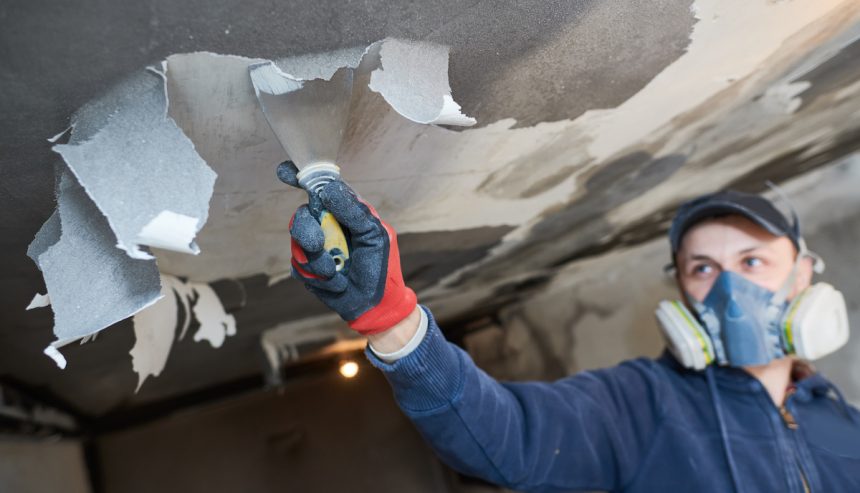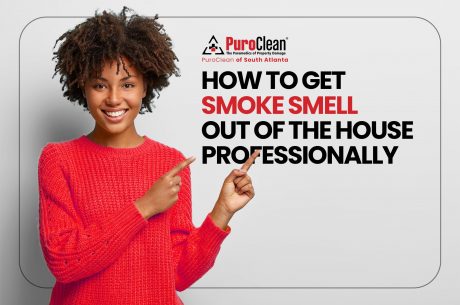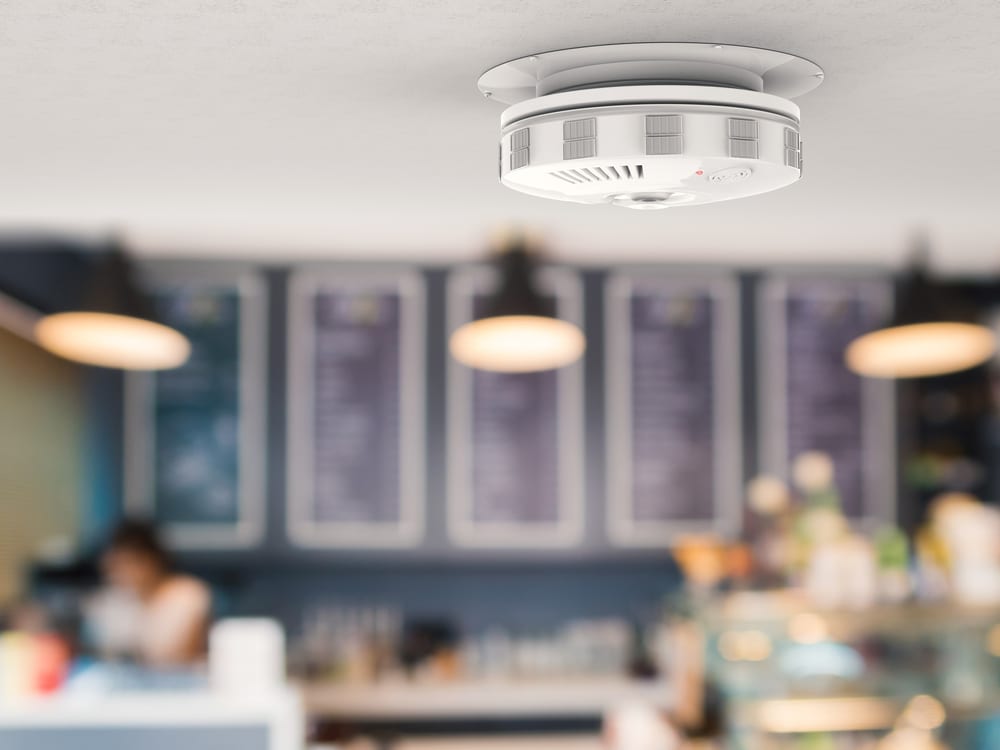Experiencing a house fire is a traumatic event, leaving homeowners in Hapeville and beyond unsure of where to start when it comes to cleaning up and restoring their homes. While it might be tempting to tackle fire damage restoration on your own to save money, there are clear limits to what you can safely and effectively do without professional help. This blog will guide you through what you can (and shouldn’t) do when restoring your home after a fire, along with important safety precautions.
At PuroClean of South Atlanta, we want to help you understand the process, so you can make informed decisions about when to call in the professionals for fire damage restoration services.
What You Can Do Yourself
Some aspects of fire damage restoration are manageable as DIY projects, but they require careful consideration of safety, materials, and personal ability. Here are some tasks you can tackle on your own:
1. Ventilate Your Home
After a fire, your home will likely have lingering smoke and soot. One of the first things you can do is ventilate the property to help reduce the smell and improve air quality:
- Open windows and doors to allow fresh air to circulate.
- Use fans to increase airflow, pushing smoke particles out of the home.
- Run air purifiers with HEPA filters to capture airborne soot and smoke particles.
Safety Tip: Make sure the property is structurally sound before entering and avoid turning on HVAC systems until a professional inspects them, as they can spread contaminants.
2. Remove Light Soot Deposits
You can attempt to clean light soot residue from walls, ceilings, and furniture using a dry cleaning sponge or a vacuum cleaner with a HEPA filter. For this process:
- Use a specialized dry cleaning sponge made for soot removal. These sponges don’t require water and are designed to lift soot particles without smearing them.
- Vacuum upholstery, drapes, and surfaces with a soft-bristle attachment to remove loose particles.
Safety Tip: Always wear protective gear like gloves, a mask, and long sleeves to avoid contact with soot, which can be harmful to your health.
3. Clean Non-Porous Surfaces
For non-porous items like glass, metal, or countertops, you can use a mild detergent or a mixture of vinegar and water to remove smoke residue. These surfaces are less likely to absorb the smoke odor, making them easier to clean:
- Mix white vinegar with water and gently scrub the surfaces with a sponge.
- Use commercial smoke removal products for more stubborn stains on durable surfaces.
Safety Tip: Avoid using harsh chemicals that can react with smoke or soot particles and release toxic fumes.
4. Wash Salvageable Fabrics
Clothing, curtains, and other washable fabrics affected by smoke can often be cleaned at home. Wash them using a heavy-duty detergent and consider adding baking soda or a vinegar solution to help neutralize odors.
- Launder fabrics separately from other clothing to prevent contamination.
- Use hot water and multiple cycles if needed to fully remove the smoke smell.
Safety Tip: Dry-cleaning is recommended for delicate or high-value fabrics, as home washing may not always remove all contaminants or odors.
What You Can’t Do Yourself
There are some tasks that, no matter how handy you are, are best left to professionals. Here’s what you shouldn’t attempt on your own:
1. Structural Repairs
Fire can weaken your home’s structure, including load-bearing walls, roof supports, and the foundation. Without the expertise to assess and repair this kind of damage, you could be putting yourself and your family at risk:
- Professional inspection required: Even if damage appears minor, fire can compromise the integrity of the structure in ways that aren’t immediately visible.
- Avoid DIY construction repairs: Rebuilding sections of your home is complex and requires permits and proper safety protocols.
Always call in a licensed contractor or a fire damage restoration company like PuroClean of South Atlanta to evaluate and handle these repairs.
2. Electrical System Repair
Fires can severely damage wiring, outlets, and electrical panels. It is extremely dangerous to attempt electrical repairs yourself, as you could risk electrocution or cause another fire:
- Do not turn on power until an electrician inspects the system.
- Avoid touching damaged outlets or exposed wires.
Professional Help: An electrician or restoration company can safely assess and replace damaged electrical systems. Never attempt DIY fixes on any fire-damaged wiring.
3. HVAC System Cleaning
After a fire, your HVAC system could be contaminated with smoke, soot, and chemicals. While you may be able to clean accessible vents, the system itself requires professional inspection and cleaning to ensure it’s safe to use again:
- Avoid running the HVAC system: Running it too soon can circulate contaminants throughout your home.
- Hire a professional to clean ducts and filters and inspect for fire damage.
Professional Help: HVAC specialists can clean and replace air filters, ductwork, and ensure the system is free of harmful contaminants.
4. Smoke Odor Removal from Porous Surfaces
Porous materials like insulation, drywall, and upholstered furniture can absorb smoke odors, making them extremely difficult to clean effectively on your own. DIY methods may only mask the smell temporarily, leaving underlying damage untreated:
- Professional-grade equipment like ozone generators and thermal foggers are often needed to fully eliminate smoke odors.
- Replacing materials: In severe cases, removing and replacing smoke-damaged drywall, insulation, and flooring is the only way to fully restore the home.
Professional Help: Fire damage restoration companies, like PuroClean, have the tools and expertise to deep clean and deodorize porous surfaces.
Safety Precautions for DIY Fire Damage Restoration
Before you begin any DIY fire damage restoration, it’s important to follow these safety guidelines:
- Wear Personal Protective Equipment (PPE): Always wear gloves, a mask, and protective clothing to avoid contact with soot and debris.
- Check for Structural Damage: Before entering the home, have it inspected by a professional to ensure it’s safe to enter.
- Avoid Waterlogged Areas: If your home was also affected by water damage from firefighting efforts, be cautious in areas where water is present as it may lead to electrical hazards or mold growth.
- Dispose of Hazardous Materials Properly: Fire-damaged materials can release harmful chemicals. Ensure that debris is disposed of according to local regulations.
When to Call PuroClean of South Atlanta
While small clean-up tasks can be manageable, fire damage restoration is often complex and requires professional help to fully restore your home. At PuroClean of South Atlanta, we offer comprehensive fire damage restoration services, including smoke odor removal, structural repairs, and soot cleanup. Our team uses advanced equipment to clean and restore your home safely and effectively.
Conclusion
DIY fire damage restoration can be a good starting point for minor cleanup tasks, but it’s important to recognize your limits. Structural repairs, electrical issues, and thorough smoke odor removal are best left to professionals to ensure your safety. If you’ve experienced fire damage in your Hapeville home, trust PuroClean of South Atlanta to provide expert restoration services. Contact us today for a consultation and let us help you restore your home to its pre-fire condition.
Useful Links:




 PuroClean of South Atlanta
PuroClean of South Atlanta